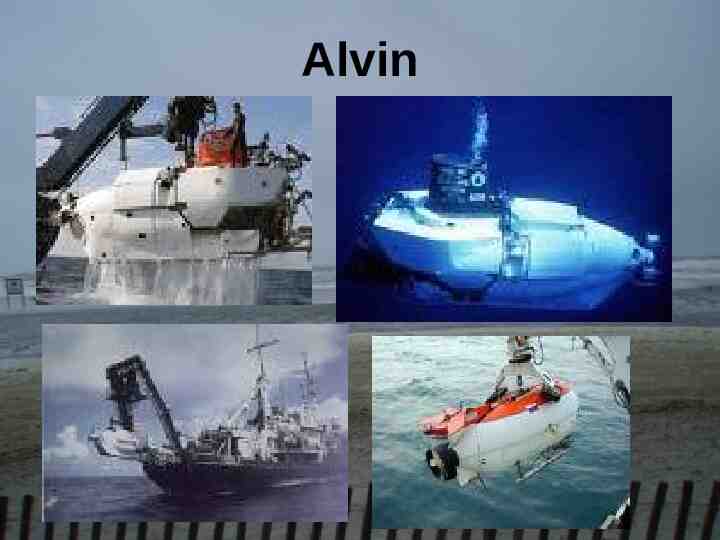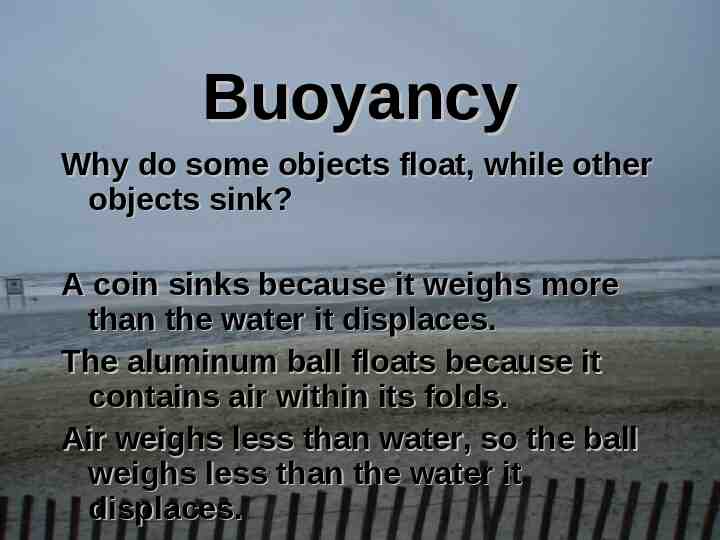Introduction to Marine Biology (Chapter 1) Jones Beach at 6:00am
92 Slides7.22 MB

Introduction to Marine Biology (Chapter 1) Jones Beach at 6:00am

Do Now What is the first thing that comes to mind when you hear, or see, the word “Marine”?

Was it this?

Or was it this?

The word “Marine”: Refers to; anything of, found in, or produced by the sea.

Marine Biology vs. Oceanography Marine Biology is the study of life in the ocean. Oceanography is the study of the physical characteristics of the ocean Sir Charles Thompson is considered to be the “Father of Oceanography”.

Physical Characteristics of Water Color Temperature Turbidity- cloudiness Salinity- saltiness Pressure Currents Density

The Water Planet Our Earth is made up of 71% water. Most of that water is marine (salt). Less than 10% of the Earth’s water is freshwater. Of that 10% less than 3% is drinkable! What is the other 7%?

Let’s go to the Video!

More Videos

Oceans 7!

Where are they Found?

Let’s Review 1. What is the difference between Marine Biology and Oceanography? 2. How much of our planet is covered by water? How much of that is freshwater? 3. Define the word Marine. 4. How many Oceans are there? Name them.

Now, sit back and let me introduce you to some of my “friends” .

A Tribute to the Undersea World

Class Work 1. 2. 3. Grab a Textbook! Read pages 7-13. Answer section review questions 1-3 on pages 10, and 1-3 on page 14.

Ocean Explorers and Navigators

Explorers/Navigators Vikings Columbus Scandinavian Countries Spain/Italy Newfoundland, Canada Bahamas Balboa Spain Panama Magellan Portugal Verrazano Italy Americas to Philippines North America

Why Did They Explore? A sense of adventure Opportunities to expand trade routes Conquer new lands Obtain great wealth

Early Ocean Explorers

HW 1. Read pages 10-13 2. Answer section review questions 1-3 on page 14 ( at the top of the page).

Diving Through the Ages

What do you think each piece of equipment is used for?

How difficult is it to see underwater without a facemask? Why?

History of Diving 4500 years ago the ancient Greeks were the first to “dive”. They used newly developed glass, it was very primitive and difficult to see through. They dove for ornamental shells.

Diving Chamber The diving chamber was a huge barrel that contained a limited supply of air! It was attached to a ship, limited movement. Was made of metal so you couldn’t see

Diving Suit The Diving Suit (1873)was made of watertight canvas had a heavy metal helmet into which air was pumped from the surface. Limited movement, still attached to the ship.

“12 Steps to Hono r”

SCUBA SCUBA- self contained underwater breathing apparatus (aqualung) was developed by Jacques Cousteau and his partner Emil Gagnan in 1942. It allowed for greater movement and freedom underwater.

Jacques Cousteau

SCUBA Gear

Summary Advances in technology, especially in the past 150 years, have given people the ability to explore the ocean: at greater depths for longer periods of time with more safety and mobility

Do Now Read pages 15 (bottom)- 20. Answer section review questions 1-3 on page 20.

Submersibles and Sonar

Why were scuba divers not used to locate the resting place of the Titanic?

How was the Titanic located? Using sonar and submersibles. 1934 Dr. William Beebe reached a depth of 900 meters in a steel chamber called a Bathysphere ( fits 2 people). In 1960 a Swiss team of Auguste and Jacques Piccard, made the deepest dive in a submersible (bathyscaphe) to the bottom of the Mariana Trench (10,852 meters- 4 hrs.). Alvin is a submersible that has logged in over 1000 dives. It holds a crew of 3. Dr. Sylvia Earle holds the record for the deepest solo dive- 380 meters. (Jim Suit)

Beebe’s Bathysphere

The Jim Suit

How do Modern Submersibles Explore the Ocean Floor? Using unmanned vehicles called Robots. Using personal submersibles. Using high tech submersibles specially outfitted to withstand the cold temperatures and high pressure of the deep ocean. Using Sonar (sound navigation and ranging).

Alvin

Sonar Sonar stands for sound navigation and ranging. Sonar uses a beam of sound waves and directs them downward. After the sound wave hits the bottom of the ocean (ocean floor), or an object, it will bounce off and return back causing an echo. This is then recorded on a depth recorder on the ship. Some marine organisms use Echolocation, which is a form of sonar (dolphins, whales, porpoises).

Sonar

Summary The development of advanced technology, in the form of submersibles, robot vehicles, and sonar equipment has opened up the fields of Marine Biology and Oceanography in a way we could never have imagined!

HW Study for exam on Chapter 1. Review powerpoints. Review homework questions. Exam is 25 questions (multiple choice, fill-ins, and short answer).

Buoyancy

Why did the Titanic Sink?

Buoyancy Why do some objects float, while other objects sink? A coin sinks because it weighs more than the water it displaces. The aluminum ball floats because it contains air within its folds. Air weighs less than water, so the ball weighs less than the water it displaces.

Buoyancy Archimedes was an ancient Greek scientist who discovered that floating objects are supported by an upward force called buoyancy. ( P.S.he discovered this while taking a bath, and decided to run through the streets shouting out “Eureka, Eureka!”) Buoyant force is equal to the weight of the liquid that the force displaces. The theory concerning buoyancy is called Archimedes Principle.

Why did the Titanic Sink? After it hit the iceberg, water began to fill the air filled compartments on the ship. The added weight of the water, combined with the weight of the ship became greater than the buoyant force supporting the ship. We all know what happened after that!

Let’s go to the Video!

HW 1. Answer chapter review questions on pages 9-12 on page 24. 2. Read pages 7-10 (top of page). 3. Answer section review questions 1-3 on page 10.















































